Evidence-BasedGeriatricNursingProtocolsfor BestPractice,FifthEdition5th

https://ebookmass.com/product/evidence-based-geriatricnursing-protocols-for-best-practice-fifth-edition-5th/
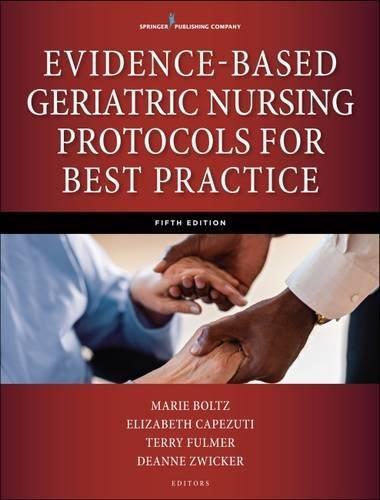
Instant digital products (PDF, ePub, MOBI) ready for you
Download now and discover formats that fit your needs...
Evidence-Based Practice in Nursing & Healthcare: A Guide to Best Practice
https://ebookmass.com/product/evidence-based-practice-in-nursinghealthcare-a-guide-to-best-practice/
ebookmass.com
Evidence Based Practice in Nursing & Healthcare: A Guide to Best Practice 3rd Edition, (Ebook PDF)
https://ebookmass.com/product/evidence-based-practice-in-nursinghealthcare-a-guide-to-best-practice-3rd-edition-ebook-pdf/
ebookmass.com
Evidence Based Practice in Nursing & Healthcare: A Guide to Best Practice 4th Edition, (Ebook PDF)
https://ebookmass.com/product/evidence-based-practice-in-nursinghealthcare-a-guide-to-best-practice-4th-edition-ebook-pdf/
ebookmass.com
Global Security in Times of Covid-19 : Brave New World? 1st ed. 2022 Edition Caroline Varin
https://ebookmass.com/product/global-security-in-times-ofcovid-19-brave-new-world-1st-ed-2022-edition-caroline-varin/ ebookmass.com
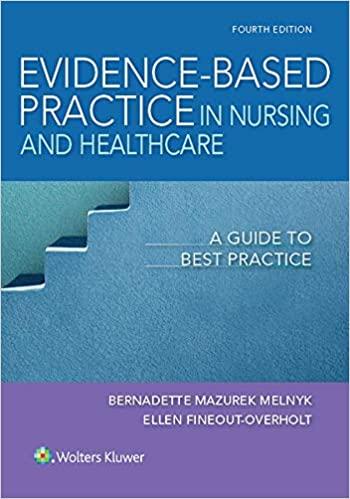
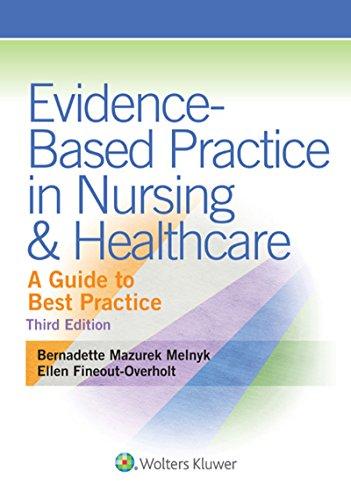

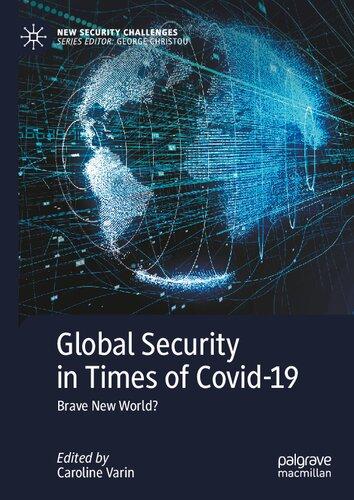
Cato The Younger: Life And Death At The End Of The Roman Republic Fred K Drogula
https://ebookmass.com/product/cato-the-younger-life-and-death-at-theend-of-the-roman-republic-fred-k-drogula/
ebookmass.com
CompTIA Security+ Certification Bundle (Exam SY0-601) Glen E. Clarke
https://ebookmass.com/product/comptia-security-certification-bundleexam-sy0-601-glen-e-clarke/
ebookmass.com
Digital Activism, Community Media, And Sustainable Communication In Latin America 1st Edition Edition Cheryl Martens
https://ebookmass.com/product/digital-activism-community-media-andsustainable-communication-in-latin-america-1st-edition-edition-cherylmartens/
ebookmass.com
Generalized Anxiety Disorder and Worrying : A Comprehensive Handbook for Clinicians and Researchers 1st Edition Alexander Gerlach
https://ebookmass.com/product/generalized-anxiety-disorder-andworrying-a-comprehensive-handbook-for-clinicians-and-researchers-1stedition-alexander-gerlach/ ebookmass.com
Critical Thinking: Pearson New International Edition: Tools for Taking Charge of Your Learning and Your Life [Print Replica] (Ebook PDF)
https://ebookmass.com/product/critical-thinking-pearson-newinternational-edition-tools-for-taking-charge-of-your-learning-andyour-life-print-replica-ebook-pdf/ ebookmass.com

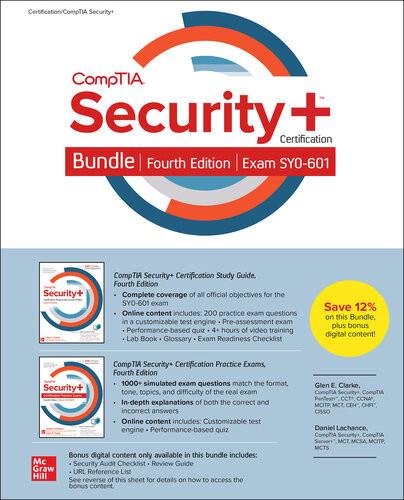
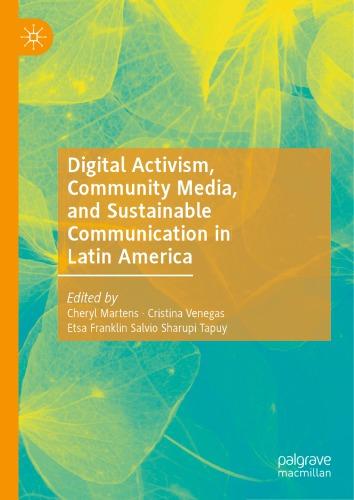
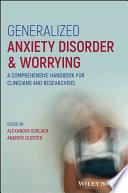
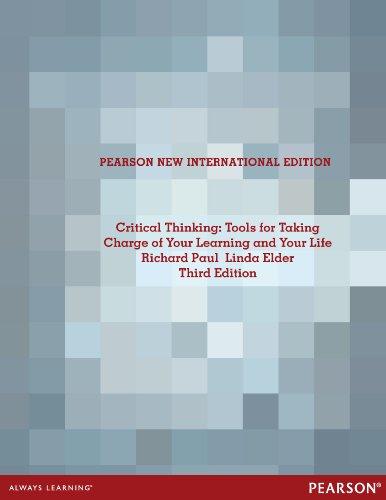
Jonathan Mcgovern
https://ebookmass.com/product/the-tudor-sheriff-a-study-in-earlymodern-administration-jonathan-mcgovern/
ebookmass.com

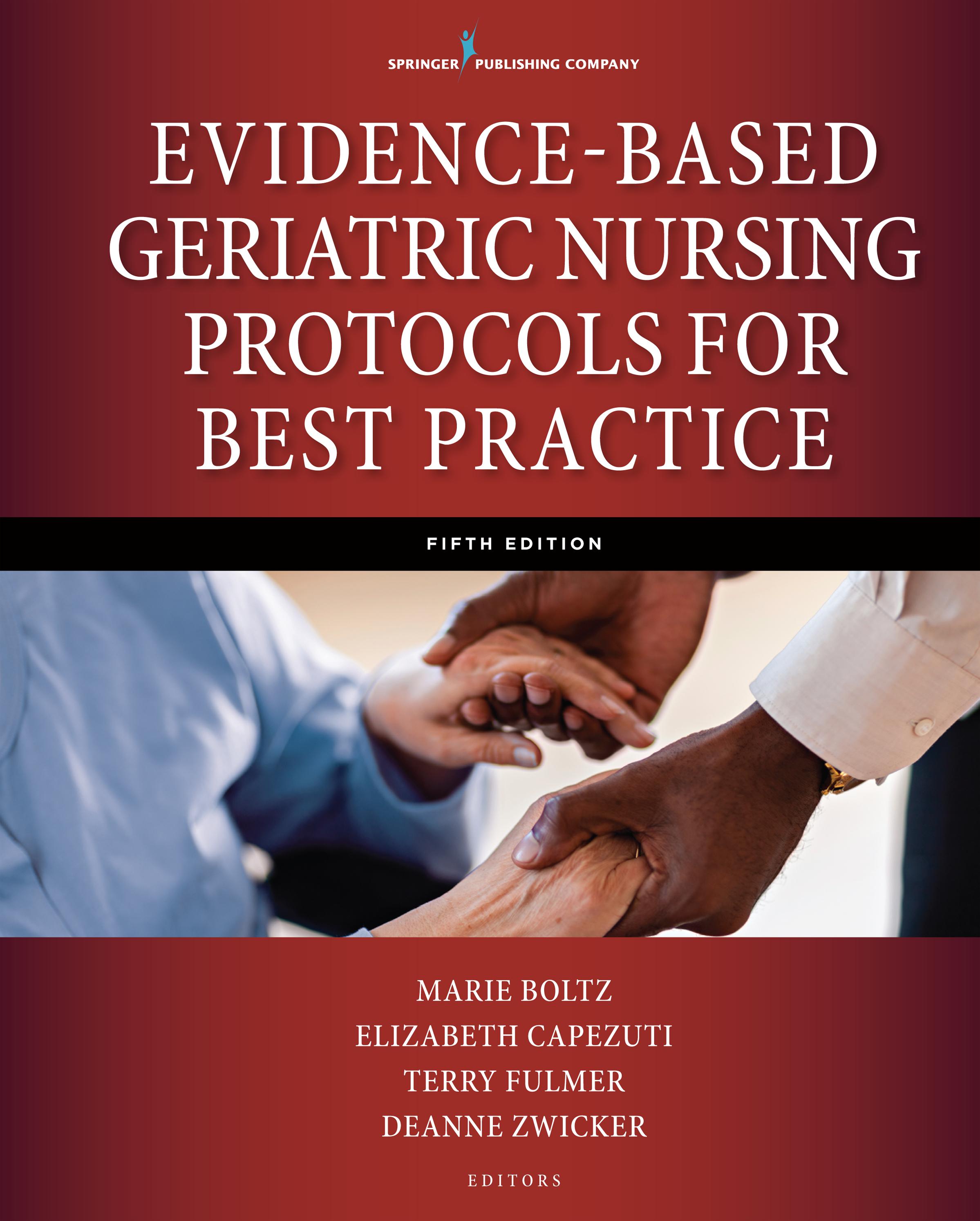
20. Reducing Adverse Drug Events 311
DeAnne Zwicker and Terry Fulmer
Educational Objectives 311
Overview 311
Background and Statement of Problem 311
Evaluation of the Problem 315
Assessment Strategies 317 Interventions and Care Strategies 324
21. Urinary Incontinence 343
Annemarie Dowling-Castronovo and Christine Bradway
Educational Objectives 343
Overview 343
Background and Statement of Problem 343
Assessment of the Problem 344
Assessment Parameters 346
Interventions and Care Strategies 349
22. Prevention of Catheter-Associated Urinary Tract Infection 363
Heidi L. Wald, Regina M. Fink, Mary Beth Flynn Makic, and Kathleen S. Oman
Educational Objectives 363
Overview 363
Background and Statement of Problem 364
Assessment of the Problem 365 Interventions and Care Strategies 366
23. Physical Restraints and Side Rails in Acute and Critical Care Settings 381
Cheryl M. Bradas, Satinderpal K. Sandhu, and Lorraine C. Mion
Educational Objectives 381
Overview 381
Background and Legal Issues 382
Prevalence and Rationale of Staff 382
Ethical Issues in the Use of Physical Restraint 383
Administrative Responsibilities 383 Interventions and Care Strategies 384
Alternatives to Physical Restraints 385
24. Preventing Pressure Ulcers and Skin Tears 395
Elizabeth A. Ayello and R. Gary Sibbald
Educational Objectives 395
Overview 395
Background and Statement of Problem 395
Assessment of the Problem 399
Does Race Make a Difference? 400 Interventions and Care Strategies 400
Skin Tears 402
25. Mealtime Difficulties in Dementia 417
Melissa Batchelor-Murphy and Sarah Crowgey
Educational Objectives 417
Overview 417
Background and Statement of Problem 418
C3P Model for Assessment and Care Strategies 419
26. Excessive Sleepiness 431
Grace E. Dean, Michelle L. Klimpt, Jonna Lee Morris, and Eileen R. Chasens
Educational Objectives 431
Overview 431
Background and Statement of Problem 431
Consequences of Excessive Sleepiness 432
Physiological Changes in Sleep That Accompany Aging 432
Primary Causes of Excessive Daytime Sleepiness 433
Secondary Causes of Excessive Daytime Sleepiness 434
Assessment of the Problem 435 Interventions and Care Strategies 436
27. The Frail Hospitalized Older Adult 443
Stewart M. Bond, Rebecca Bolton, and Marie Boltz
Educational Objectives 443
Overview 443
Background and Statement of Problem 443 Assessment of the Problem 445
PART Iv. InTERvEnTIons In sPEcIAlTy PRAcTIcE
28. Substance Misuse and Alcohol Use Disorders 457
Madeline A. Naegle and Donna McCabe
Educational Objectives 457
Overview 457
Background and Statement of Problem 457 Assessment of Substance Use Disorders 459 Assessment of Substance Use 461 Interventions and Care Strategies 463
29. Comprehensive Assessment and Management of the Critically Ill 479
Michele C. Balas, Colleen M. Casey, Lauren Crozier, and Mary Beth Happ
Educational Objectives 479
Overview 479
Background and Statement of Problem 480
Assessment of Problem and Nursing Care Strategies 480
30. Fluid Overload: Identifying and Managing Heart Failure Patients at Risk of Hospital Readmission 503
Judith E. Schipper
Educational Objectives 503
Overview 503
Background and Statement of Problem 504
Assessment of the Problem 506 Interventions and Care Strategies 512
31. Cancer Assessment and Intervention Strategies 525 Janine Overcash
Educational Objectives 525
Overview 525
Assessment of the Older Hospitalized Patient 526
Developing a Comprehensive Geriatric Assessment for Hospitalized Patients 527
Medical Emergencies Associated With Cancer and Cancer Treatment 528
32. Perioperative Care of the Older Adult 537
Fidelindo Lim and Larry Z. Slater
Educational Objectives 537
Overview 537
Background and Statement of Problem 538
Assessment of Problem and Nursing Care Strategies 539
Postanesthesia Care Unit Considerations 542
General Perioperative Considerations 543
33. General Surgical Care of the Older Adult 559
Larry Z. Slater and Fidelindo Lim Educational Objectives 559
Overview 559
Background and Statement of Problem 560
Assessment of the Problem and Nursing Care Strategies 560
34. Care of the Older Adult With Fragility Hip Fracture 591
Anita J. Meehan, Ami Hommel, Karen Hertz, Valerie MacDonald, and Ann Butler Maher
Educational Objectives 591
Overview 591
Background and Statement of Problem 591
Definition of Fragility Hip Fracture 592
Surgical Repair of Hip Fracture 593
Pathophysiology 594
Common Complications and Evidence-Based Nursing Care Strategies 596
Pain: Significance in Hip-Fracture Patients 596
Delirium: Significance in Hip-Fracture Patients 597
Malnutrition: Significance in Hip-Fracture Patients 598
Fluid and Electrolyte Imbalance: Significance in Hip-Fracture Patients 599
Pressure Ulcer: Significance in Hip-Fracture Patients 600
VTE: Significance in Hip-Fracture Patients 601
Catheter-Associated Urinary Tract Infection: Significance in Hip-Fracture Patients 602
Functional Decline: Significance in Hip-Fracture Patients 603
Loss, Grief, and Depression: Significance in HipFracture Patients 603
Care Transitions: Significance in Hip-Fracture Patients 604
Secondary Prevention: Significance in Hip-Fracture Patients 604
PART v. modEls of cARE
35. Acute Care Models 621
Elizabeth Capezuti, Ana Julia Parks, Marie Boltz, Michael L. Malone, and Robert M. Palmer
Educational Objectives 621
Overview 621
Objectives of Geriatric Acute Care Models 621
Types of Acute Care Models 623
36. Transitional Care 633
Fidelindo Lim, Janice B. Foust, and Janet H. Van Cleave
Educational Objectives 633
Overview 633
Background and Statement of Problem 634
Assessment of the Problem 635
Interventions and Care Strategies 636
37. Palliative Care Models 651
Constance Dahlin
Educational Objectives 651
Overview 651
Current State of Palliative Care 652
Quality and Palliative Care 653
Outcomes 655
Models Across Health Care Venues 656
Appendix 664
38. Care of the Older Adult in the Emergency Department 669
Marie Boltz and Amala Sooklal
Educational Objectives 669
Overview 669
Background and Statement of Problem 669
Assessment of the Older Adult in the ED 670
Nursing Interventions 676
Transitions From the ED 677
39. Advance Care Planning 691
Linda Farber Post and Marie Boltz
Educational Objectives 691
Overview 691
Background 692
Types of Advance Directives 692
Advance Directives and Decision Making 694
Other Types of ACP 696
Decisional Capacity to Engage in ACP 698
Cultural Perspectives on ACP 699
Nurses’ Roles in ACP 700
ACP Interventions and Strategies 701
Index 711
Elizabeth A. Ayello, PhD, RN, ACNS-BC, CWON, ETN, MAPWCA, FAAN Faculty
Excelsior College School of Nursing
Clinical Editor
Advances in Skin and Wound Care
Senior Advisor
John A. Hartford Institute for Geriatric Nursing, New York University Course Coordinator
International Interprofessional Wound Care Course (IIWCC), New York University
New York, New York
Michele C. Balas, PhD, RN, APRN-NP, CCRN
Associate Professor Center of Excellence in Complex and Critical Care
The Ohio State University, College of Nursing Columbus, Ohio
Melissa Batchelor-Murphy, PhD, RN-BC, FNP-BC
Assistant Professor
Duke University School of Nursing Durham, North Carolina
Cheri Blevins, MSN, RN, CCRN, CCNS
Clinical Nurse Specialist
Medical Intensive Care Unit
Adjunct Faculty
University of Virginia School of Nursing
Charlottesville, Virginia
Rebecca Bolton, BSN, RN
Boston College
Chestnut Hill, Massachusetts
Marie Boltz, PhD, RN, GNP-BC, FGSA, FAAN
Associate Professor
William F. Connell School of Nursing
Boston College
Chestnut Hill, Massachusetts
Stewart M. Bond, PhD, RN, AOCN
Assistant Professor
William F. Connell School of Nursing
Boston College
Chestnut Hill, Massachusetts
Cheryl M. Bradas, PhD(c), RN, GCNS-BC, CNRN
Geriatric Clinical Nurse Specialist
Specialty Care Patient Care Unit: Acute Care Units
MetroHealth Medical Center
Cleveland, Ohio
Christine Bradway, PhD, GNP-BC, FAAN
Associate Professor of Gerontological Nursing
Biobehavioral Health Sciences Department
University of Pennsylvania School of Nursing
Philadelphia, Pennsylvania
Pamela Z. Cacchione, PhD, RN, CRNP, BC, FGSA, FAAN
Ralston House Term Chair in Gerontological Nursing
Associate Professor of Geropsychiatric Nursing-Clinician Educator
Associate Director of the Center for Integrative Science of Aging
PENN SON Liason, National Hartford Centers of Gerontological Nursing Excellence
Interim Program Director of Psychiatric Mental Health Nursing Program
University of Pennsylvania School of Nursing
Philadelphia, Pennsylvania
Billy A. Caceres, MSN, RN-BC, AGPCNP-BC
PhD Candidate
New York University College of Nursing
New York, New York
Elizabeth Capezuti, PhD, RN, FAAN
William Randolph Hearst Foundation Chair in Gerontology
Assistant Dean for Research Hunter-Bellevue School of Nursing
Hunter College of the City University of New York (CUNY)
Professor Nursing PhD Program
CUNY Graduate Center
New York, New York
Colleen M. Casey, PhD, ANP-BC, CNS
Assistant Professor
Division of General Internal Medicine and Geriatrics
Director of Geriatric Outpatient Initiatives
Oregon Health & Science University, School of Medicine
Assistant Professor
Oregon Health & Science University, School of Nursing Portland, Oregon
Eileen R. Chasens, PhD, RN, FAAN
Associate Professor and Vice-Chair for Administration Department of Health and Community Systems School of Nursing
University of Pittsburgh Pittsburgh, Pennsylvania
Valerie T. Cotter, DrNP, AGPCNP-BC, FAANP
Advanced Senior Lecturer
University of Pennsylvania School of Nursing Philadelphia, Pennsylvania
Sarah Crowgey, BSN, RN
Duke University School of Nursing Durham, North Carolina
Lauren Crozier
Undergraduate Honors
BSN Nursing Student
The Ohio State University, College of Nursing Columbus, Ohio
Constance Dahlin, ANP-BC, ACHPN, FPCN, FAAN
Palliative Care Specialist
Director of Professional Practice
Hospice and Palliative Nurses Association
Pittsburgh, Pennsylvania
Consultant, Center to Advance Palliative Care
New York, New York
Palliative Nurse Practitioner
North Shore Medical Center
Salem, Massachusetts
Grace E. Dean, PhD, RN
Adjunct Assistant Professor
Roswell Park Cancer Institute
Associate Professor
School of Nursing
State University of New York University at Buffalo Buffalo, New York
Rose Ann DiMaria-Ghalili, PhD, RN, CNSC, FASPEN
Associate Professor
Doctoral Nursing
College of Nursing and Health Professions
Drexel University Philadelphia, Pennsylvania
Annemarie Dowling-Castronovo, PhD, RN, GNP-BC
Associate Professor
The Evelyn L. Spiro School of Nursing
Wagner College
Staten Island, New York
Regina M. Fink, PhD, RN, AOCN, CHPN, FAAN
Research Nurse Scientist
Associate Professor
University of Colorado, College of Nursing and School of Medicine
Anschutz Medical Campus
Aurora, Colorado
Johan Flamaing, MD, PhD
Department of Geriatric Medicine
University Hospitals Leuven
Department of Clinical and Experimental Medicine
KU Leuven Leuven, Belgium
Kathleen Fletcher, DNP, RN, GNP-BC, FAAN Director, Geriatric Nurse Clinical Practice Program Research Associate in Gerontological and Population Health
Riverside Center for Excellence in Aging and Lifelong Health
Riverside Health System
Newport News, Virginia
Clinical Assistant Professor of Nursing University of Virginia School of Nursing Charlottesville, Virginia
Marquis D. Foreman, PhD, RN, FAAN
John L. and Helen Kellogg Dean of Nursing Professor, Adult Health and Gerontological Nursing College of Nursing Rush University Chicago, Illinois
Janice B. Foust, PhD, RN Assistant Professor College of Nursing, Health Science University of Massachusetts Boston, Massachusetts
Terry Fulmer, PhD, RN, FAAN President
John A. Hartford Foundation New York, New York
Elizabeth Galik, PhD, CRNP Associate Professor
University of Maryland School of Nursing Baltimore, Maryland
Mindy S. Grall, PhD, APRN-BC Director
Stroke and Cerebrovascular Program Chair
Pain Resource Team Baptist Health Jacksonville, Florida
Deanna Gray-Miceli, PhD, GNP-BC, FGSA, FAANP, FAAN
Assistant Professor
Rutgers, School of Nursing Newark, New Jersey; and Institute of Health, Health Care Policy and Aging Research New Brunswick, New Jersey
Mary Beth Happ, PhD, RN, FGSA, FAAN Distinguished Professor of Critical Care Research Director
Center of Excellence in Critical and Complex Care
The Ohio State University, College of Nursing Columbus, Ohio
Theresa A. Harvath, PhD, RN, FAAN Clinical Professor and Director of Clinical Education Betty Irene Moore School of Nursing University of California—Davis Sacramento, California
Pieter Heeren, MSc, RN Department of Public Health and Primary Care Academic Centre for Nursing and Midwifery
KU Leuven Department of Geriatrics University Hospitals Leuven Leuven, Belgium
Karen Hertz, RGN, MSc, BSc Advanced Nurse Practitioner University Hospital of North Midlands Stoke-on-Trent, United Kingdom Chair
International Collaboration of Orthopaedic Nursing (ICON)
Ami Hommel, RN, CNS, PhD Associate Professor Skane University Hospital and Malmo University Malmo, Sweden Ambassador
International Collaboration of Orthopaedic Nursing (ICON)
Ann L. Horgas, PhD, RN, FGSA, FAAN Associate Professor University of Florida College of Nursing Gainesville, Florida
Michelle L. Klimpt, BSN, RN Nurse II Department of Nursing Roswell Park Cancer Institute Buffalo, New York
Denise M. Kresevic, PhD, RN, APN-BC
Louis Stokes Cleveland VAMC
Geriatric Research Education Clinical Center (GRECC)
Associate Director of Education/Evaluation
Clinical Nurse Specialist
University Hospitals Case Medical Center
Cleveland, Ohio
Susan Kaplan Jacobs, MLS, MA, RN, AHIP
Health Sciences Librarian/Associate Curator
Elmer Holmes Bobst Library
New York University
New York, New York
Rona F. Levin, PhD, RN
Clinical Professor and Director
Doctor of Nursing Practice Program
New York University College of Nursing
New York, New York
Fidelindo Lim, DNP, CCRN
Clinical Assistant Professor
New York University College of Nursing
New York, New York
Valerie MacDonald, RN, MSN, ONC, CNS
Fraser Health Authority
Burnaby General Hospital, British Columbia
Adjunct Professor
University of British Columbia School of Nursing
Vancouver, British Columbia
Ambassador
International Collaboration of Orthopaedic Nursing (ICON)
Ann Butler Maher, MS, RN, FNP-BC, ONC
Family Nurse Practitioner
Long Branch, New Jersey
Ambassador
International Collaboration of Orthopaedic Nursing
Mary Beth Flynn Makic, RN, PhD, CNS, CCNS, FAAN, FNAP
Associate Professor
University of Colorado
Anschutz Medical Campus College of Nursing
Aurora, Colorado
Michael L. Malone, MD
Medical Director
Aurora Senior Services & Aurora Visiting Nurse Association of Wisconsin
Aurora Health Care
Clinical Adjunct Professor of Medicine
University of Wisconsin School of Medicine and Public Health
Milwaukee, Wisconsin
Donna McCabe, DNP, APRN-BC, GNP, CWCN
Clinical Assistant Professor
New York University College of Nursing
New York, New York
Glenise L. McKenzie, PhD, RN
Associate Professor
Program Director
Baccalaureate Completion Program for RNs
Oregon Health & Science University, School of Nursing
Portland, Oregon
Anita J. Meehan, MSN, RN-BC, ONC, FNGNA
Clinical Nurse Specialist, Gerontology
Cleveland Clinic Akron General Akron, Ohio
Ambassador
International Collaboration of Orthopaedic Nursing (ICON)
Janet C. Mentes, PhD, APRN, BC, FGSA, FAAN
Associate Professor and Co-Director
Center for the Advancement of Gerontological Nursing Science
University of California Los Angeles, School of Nursing
Los Angeles, California
Deborah C. Messecar, PhD, MPH, AGCNS-BC, RN
Associate Professor
Oregon Health & Science University, School of Nursing Portland, Oregon
Koen Milisen, PhD, RN Professor
Department of Public Health and Primary Care
Academic Centre for Nursing and Midwifery
KU Leuven
Department of Geriatrics University Hospitals Leuven Leuven, Belgium
Lorraine C. Mion, PhD, RN, FAAN
Independence Foundation Professor of Nursing Director
Vanderbilt Center for Gerontological Nursing Excellence
Vanderbilt School of Nursing Nashville, Tennessee
Jonna Lee Morris, MSN, RN Doctoral Student School of Nursing University of Pittsburgh Pittsburgh, Pennsylvania
Madeline A. Naegle, PhD, CNS-PMH, BC, FAAN Professor
New York University College of Nursing
New York, New York
Linda J. O’Connor, MSN, RNC, GCNS-BC, LNC
Assistant Administrator for Nursing and Hospital Affairs
Mount Sinai Health System
Mount Sinai Hospital
New York, New York
Kathleen S. Oman, PhD, RN, FAEN, FAAN Children’s Hospital
Colorado Chair in Pediatric Nursing
Associate Professor
University of Colorado, College of Nursing Aurora, Colorado
Janine Overcash, PhD, GNP-BC, FAANP Director of the Adult/Gerontological Nurse Practitioner Program
Clinical Associate Professor
The Ohio State University, College of Nursing Columbus, Ohio
Robert M. Palmer, MD, MPH Director
Glennan Center for Geriatrics and Gerontology Professor of Internal Medicine
Eastern Virginia Medical School Norfolk, Virginia
Lenard L. Parisi, RN, MA, CPHQ, FNAHQ
Vice President
Quality Management and Performance Improvement
Metropolitan Jewish Health System
Brooklyn, New York
Ana Julia Parks
Undergraduate Nursing Student
Boston College
Chestnut Hill, Massachusetts
Linda Farber Post, JD, MA, BSN Director, Bioethics
Medical Affairs
Hackensack University Medical Center Hackensack, New Jersey
Patricia A. Quigley, PhD, MPH, APRN, CRRN, FAAN, FAANP
Retired Associate Chief
Nursing Service for Research
Retired Associate Director VISN 8 Patient Safety Center of Inquiry
James A. Haley Veterans Administration Medical Center Health Services Research and Development Center of Innovation on Disability and Rehabilitation Research Veterans Integrated Services Network 8 Tampa, Florida
Barbara Resnick, PhD, CRNP, FAAN, FAANP Professor and Sonya Ziporkin Gershowitz Chair in Gerontology University of Maryland School of Nursing Baltimore, Maryland
Satinderpal K. Sandhu, MD
Primary Care Syracuse, Virginia
Judith E. Schipper, DNP, NPC, CLS, CHFN, FNLA, FPCNA
Clinical Coordinator
Heart Failure Program
New York University Langone Medical Center
New York, New York
R. Gary Sibbald, MD, FRCPC, ABIM, DABD, Med Director
Wound Healing Clinic
The New Women’s College Hospital Professor
Public Health Sciences and Medicine
University of Toronto, Toronto, Ontario, Canada
Larry Z. Slater, PhD, RN-BC, CNE
Clinical Assistant Professor
New York University College of Nursing
New York, New York
Constance M. Smith, PhD, RN President C.M. Smith Technical Writing, Inc. Wilmington, Delaware
Amala Sooklal, BSN, RN
Boston College William F. Connell School of Nursing Chestnut Hill, Massachusetts
Elaine E. Steinke, PhD, APRN, CNS-BC, FAHA, FAAN Professor School of Nursing Coordinator, Adult-Gerontology Acute Care Nurse Practitioner Program
Wichita State University Wichita, Kansas
Jos Tournoy, MD, PhD
Geriatric Medicine and Memory Clinic University Hospitals Leuven Department of Clinical and Experimental Medicine KU Leuven
Leuven, Belgium
Dorothy F. Tullmann, PhD, RN, CNL Associate Professor Director, MSN and DNP Programs University of Virginia School of Nursing Charlottesville, Virginia
Janet H. Van Cleave, PhD, RN Assistant Professor
New York University College of Nursing New York, New York
Heidi L. Wald, MD, MSPH Associate Professor and Vice Chair for Quality Control Department of Medicine University of Colorado School of Medicine Aurora, Colorado
Saunjoo L. Yoon, PhD, RN Associate Professor
University of Florida, College of Nursing Gainesville, Florida
DeAnne Zwicker, DrNP, AGNP-BC Inova Medical Group/Geriatrics SNF Department Reston, Virginia
For more than 60 years, the National Institutes of Health (NIH) has supported research to improve the health of and prolong the lives of people in the United States and around the world. Over that time, mean life expectancy worldwide has doubled to more than 70 years, due in large part to medical and public health interventions developed with NIH funding (Fauci & Collins, 2015). More than 60 years of biomedical and social sciences research have yielded much of the scientific foundation on which the knowledge base of nursing has been and is being built. The editors and contributing authors of Evidence-Based Geriatric Nursing Protocols for Best Practice have been well supported by the NIH and other federal and nonfederal funding agencies; many are graduates of the National Hartford Center of Gerontological Nursing Excellence (NHCGNE) and the Patricia G. Archbold Predoctoral and/or Claire M. Fagin Postdoctoral Awards programs. The NHCGNE is a collaboration among the coordinating center housed at the Gerontological Society of America and schools of nursing and international institutions, that have demonstrated the highest level of commitment to the field of gerontological nursing. NHCGNE is unique in that its sole focus is gerontological nursing and because it builds on the legacy of the John A. Hartford Foundation. Their mission is to enhance and sustain the capacity and competency of nurses to provide quality care to older adults through faculty development, advancing gerontological nursing science, facilitating adoption of best practices, fostering leadership, and designing and shaping policy. Their vision is optimal health for all older adults.
The editors and contributing authors of EvidenceBased Geriatric Nursing Protocols for Best Practice are experts in gerontological nursing; they are scientists, educators, leaders, and clinicians dedicated to an interdisciplinary approach to clinical practice that can be defined in terms of a “three-legged stool” integrating three basic principles: (a) the best available research evidence bearing on whether and why a treatment works, (b) clinical expertise
(clinical judgment and experience) to rapidly identify each patient’s unique health state and diagnosis and the individual risks and benefits of potential clinical interventions, and (c) client preferences and values (Lilienfeld, Ritschel, Lynn, Cautin, & Latzman, 2013; Spring, 2007). This book is uniquely positioned to assist nurses across health care sectors, as well as students and members of an interdisciplinary health team, to improve geriatric patient care and outcomes. For me, since my day job is more research administration than practice, this book keeps me connected and grounded in research evidence, practice, and patient outcomes.
The benefits of having a competent gerontological nurse at the bedside, when needed, cannot be overstated. Nursing is critical for older adults desiring to maintain health, improve health behaviors, avoid unnecessary hospitalizations, and live full and physically functional lives. Gerontological nursing is an evidence-based nursing specialty practice committed to improving the health, outcomes, and lives of older adult patients, their families, communities, and support systems. Evidence-Based Geriatric Nursing Protocols for Best Practice should be a part of every gerontological clinician’s toolkit. It helps to make sense of an often confusing system and educates patients, families, and friends about evidence-based best practices for older adults and how to access the valuable resources available to them.
I am most impressed by the behavioral objectives, which immediately provide information about what can be achieved by reading the chapters, the refined and complex case studies that challenge one’s depth of knowledge and skill in diagnosis, and chapter summaries listing nursing standards of practice. In addition, resources are included; many link to organizations that provide relevant tools and current information. For example, in Chapter 26, “Excessive Sleepiness,” the link to the basics-of-sleep guide at www.sleepresearchsociety .org/Products.aspx may prove highly valuable given the
prevalence of apnea in older adults. References in each chapter are keyed to the level of quantitative evidence available for each clinical topic. If you do not understand or are unable to use the pyramid in Figure F.1, do not miss reading Chapter 1, “Developing and Evaluating Clinical Practice Guidelines: A Systematic Approach.” As the authors state, “Clinical decision making that is grounded in the best available evidence is essential to promote patient safety and quality health care outcomes.” They provide expert guidance on how to best evaluate the evidence.
This book does much to advance clinical decision making based on research evidence. However, there remains critical work to generate research at the highest levels of the pyramid to facilitate evidence-based practice, enhance education, and improve health care systems and patient outcomes. The nursing profession is engaging in more interventions research; however, much of this
Level of evidence hierarchy.
Level I
Level II
research suffers from small sample sizes and a lack of seasoned clinical trialists. This is slowly changing.
This text, now in its fifth edition, serves us well as a foundation for clinical decision making in 39 clinical topics. Evidence-Based Geriatric Nursing Protocols for Best Practice saves time for clinicians and educators because the evidence presented, which was exhaustively chronicled, is outstanding and addresses issues, such as the of lack of time, knowledge, experience, and skill with evidencebased practice, and is a model for establishing nursing’s best practices. In this fifth edition, there are six new chapters, including “The Frail Hospitalized Older Adult,” “Perioperative Care of the Older Adult,” “General Surgical Care of the Older Adult,” “Care of the Older Adult With Fragility Hip Fracture,” “Care of the Older Adult in the Emergency Department” and “Palliative Care Models.”
As evidence-based practice continues to evolve and adapt, it is time to refine our approaches and enhance the
Systematic reviews (integrative/meta-analyses) CPGs based on systematic reviews/ large multicenter clinical trials
Single experimental study (RCTs)
Level III
Quasi-experimental studies
Level IV
Nonexperimental studies
Level V
Case report/program evaluation/ narrative literature reviews
Level VI
Opinions of respected authorities
CPG, clinical practice guidelines; RCT, randomized controlled trials. Originally published in Levin (2011). Reprinted with permission.
levels of evidence supporting gerontological nursing practice. History shows that the tools of modern science and research offer the opportunity to significantly alter major diseases that sap human health and exacerbate instability in the lives of older adults. It is imperative that gerontological nursing sustains momentum and works to deliver care founded on evidence-based protocols for best practices to older adults who need them most.
J. Taylor Harden, PhD, RN, FGSA, FAAN
Executive Director
National Hartford Center of Gerontological Nursing Excellence
Former Assistant to the Director for Special Populations, Retired National Institute on Aging
REfEREncEs
Fauci, A. S., & Collins, F. S. (2015). NIH research: Think globally. Science, 348 (6231), 159. doi:10.1126/science .aab2733
Levin, R. F. (2011). Edifices of evidence: The proliferation of pyramids. Research and Theory for Nursing Practice, 25(1), 8–10.
Lilienfeld, S. O., Ritschel, L. A., Lynn, S. J., Cautin, R. L., & Latzman, R. D. (2013). Why many clinical psychologists are resistant to evidence-based practice: Root causes and constructive remedies. Clinical Psychology Review, 33(7), 883–900.
Spring, B. (2007). Evidence-based practice in clinical psychology: What it is; why it matters; what you need to know. Journal of Clinical Psychology, 63(7), 611–631.

